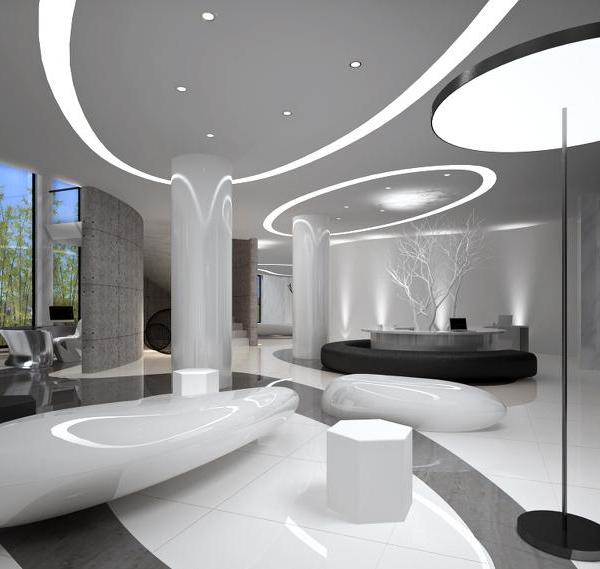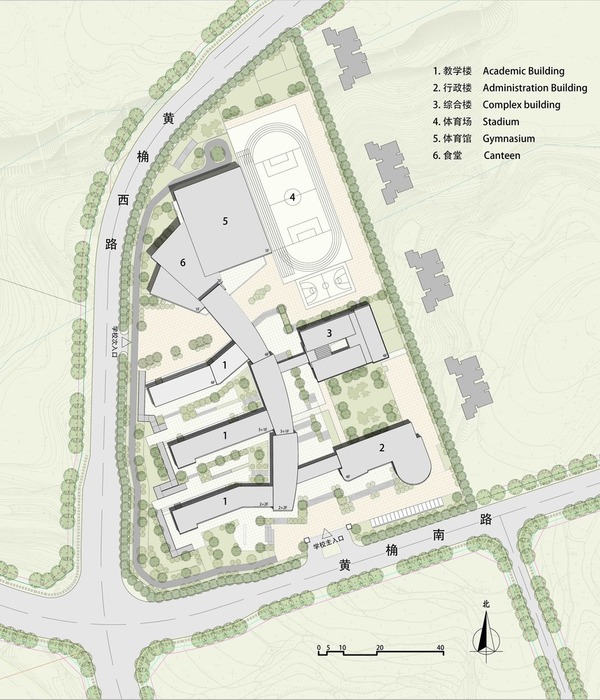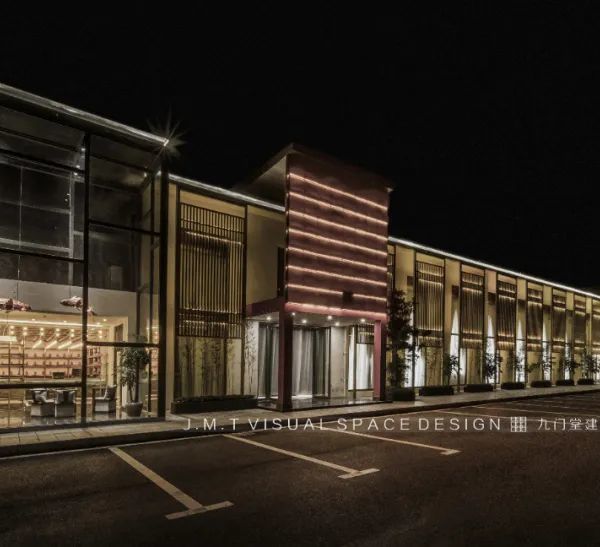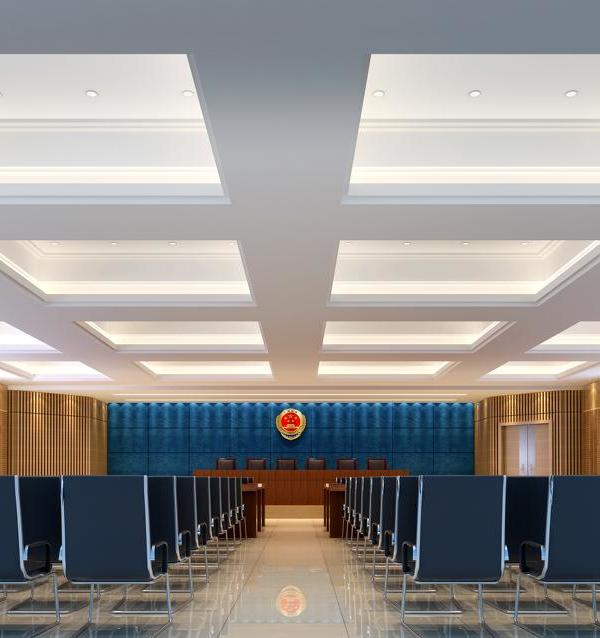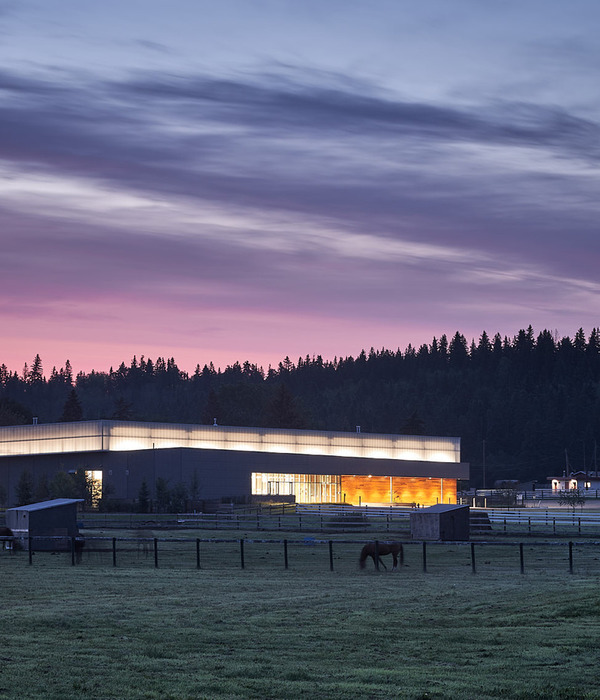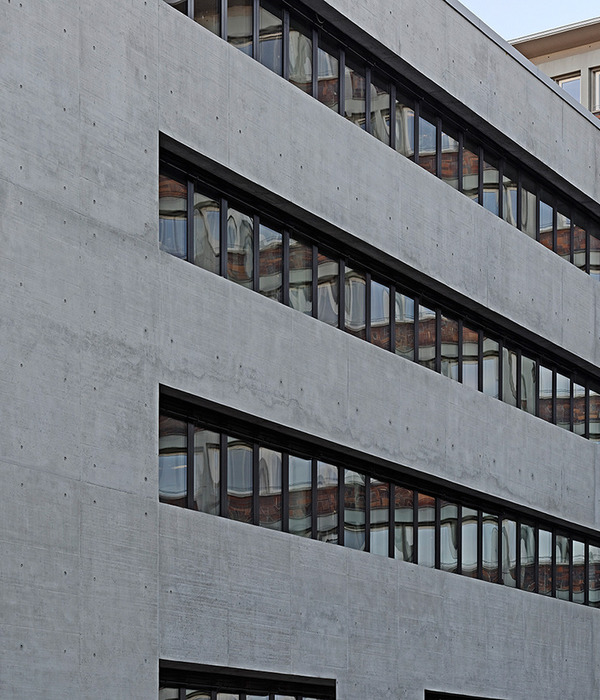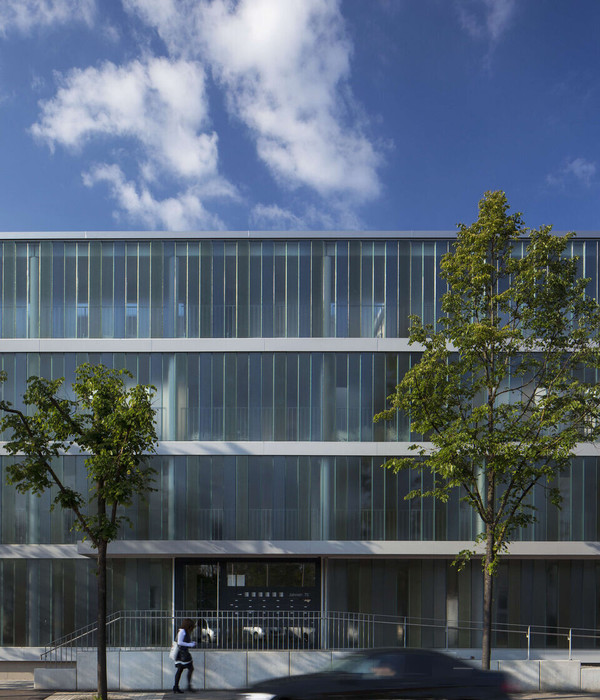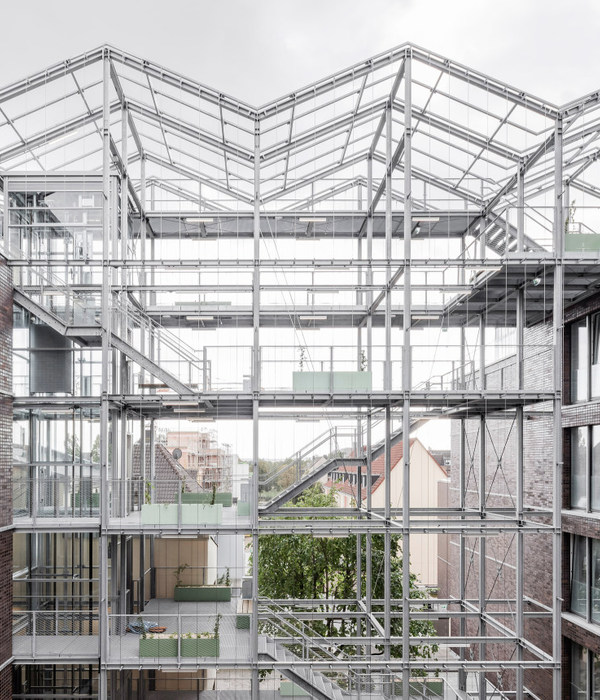© Balázs Danyi
(Balázs Danyi)
架构师提供的文本描述。布达的旧市政厅是匈牙利最重要的纪念碑之一。它之所以具有重要意义,是因为匈牙利首都的裁判所从1688年(土耳其统治的150年结束)到19世纪末一直在这里运作,而且它的独特之处在于它的建筑历史在时间和空间上都是层次分明的。由13~14世纪的几座民用建筑组成的建筑群,形成于18世纪的几个时期,形成了一座反映巴洛克式建筑的统一、有代表性的建筑。在中世纪,可能有五所较小的房子取代了今天的建筑,其中的碎片保存在地窖和底层的墙壁上。
Text description provided by the architects. The old Town Hall of Buda is one of Hungary's most important monuments. It is significant because the magistracy of the Hungarian capital operated here from 1688 (the end of 150 years of Turkish rule) until the late 19th century, and it is also unique because of the layering of its construction history both in time and space. The conglomerate of constructions consisting of several civilian buildings from the 13-14th century was formed during the 18th century in several periods to one unified, representative building reflecting Baroque architecture. In the middle ages, there were probably five smaller houses in place of today’s building, the fragments of which are preserved in the cellars and ground floor walls.
Text description provided by the architects. The old Town Hall of Buda is one of Hungary's most important monuments. It is significant because the magistracy of the Hungarian capital operated here from 1688 (the end of 150 years of Turkish rule) until the late 19th century, and it is also unique because of the layering of its construction history both in time and space. The conglomerate of constructions consisting of several civilian buildings from the 13-14th century was formed during the 18th century in several periods to one unified, representative building reflecting Baroque architecture. In the middle ages, there were probably five smaller houses in place of today’s building, the fragments of which are preserved in the cellars and ground floor walls.
© Balázs Danyi
(Balázs Danyi)
Ground Floor Plan
© Balázs Danyi
(Balázs Danyi)
1688年,在奥斯曼人占领150年之后,布达镇几乎立即指定了这一组地块,用于重建以前的中世纪房屋。这座房子的建造历史由几个时期组成。在1688年至1891年这两个最重要的阶段中的第一个阶段,这些作品由皇帝的建筑师维内利奥·塞莱索拉(Venerio Ceresola)领导,他使这座中世纪建筑的遗骸得以再次使用。1770年至71年,美国著名的巴洛克建筑公司MATTHÄus尼泊尔奥尔(MATTHA)进行了至今仍占主导地位的最具决定性意义的建筑:统一的巴洛克式外墙-整合了底层的中世纪遗迹-当时与角落阳台一起完工。整个建筑变成了两层楼,雄伟的巴洛克主楼梯也被建造起来,创造了一个双层的内部空间结构,以及地面和一楼的外部走廊。
In 1688, almost immediately after the 150 years of the Ottoman occupation, the Town of Buda designated this cluster of plots for the reconstruction of the former medieval houses. The construction history of the house consists of several periods. In the first of the two most important phases, from 1688 to 1891, the works were led by the emperor’s architect, Venerio Ceresola, who made the remains of the medieval building usable again. In 1770-71, Matthäus Nepauer, a significant Baroque builder of Buda carried out the most determinant construction that still dominates today: the uniform Baroque façade – integrating the medieval remains of the ground floor too – was finished at that time together with the corner balconies. The whole building became two-story, the imposing Baroque main staircase was also built, creating a double-court inner space structure, together with the exterior corridors on the ground and the first floor.
In 1688, almost immediately after the 150 years of the Ottoman occupation, the Town of Buda designated this cluster of plots for the reconstruction of the former medieval houses. The construction history of the house consists of several periods. In the first of the two most important phases, from 1688 to 1891, the works were led by the emperor’s architect, Venerio Ceresola, who made the remains of the medieval building usable again. In 1770-71, Matthäus Nepauer, a significant Baroque builder of Buda carried out the most determinant construction that still dominates today: the uniform Baroque façade – integrating the medieval remains of the ground floor too – was finished at that time together with the corner balconies. The whole building became two-story, the imposing Baroque main staircase was also built, creating a double-court inner space structure, together with the exterior corridors on the ground and the first floor.
© Balázs Danyi
(Balázs Danyi)
第二次世界大战期间,建筑遭受了巨大的破坏:UriUTCA的角落和Szenta和Romsa的中间部分,Gutca机翼几乎在地面地板上方的拱顶处倒塌,超过一半的屋顶结构被破坏,其痕迹今天仍然是可见的。1949年至1952年之间发生了恢复,这些职能从历史博物馆到高级研究学院多次改变。2014年至2018年,异狄克MeshtermLtd.的设计团队、建筑师和专家策划了这座建筑的纪念碑重建、现代化和扩建。该工作的科学背景受考古和艺术历史研究的支持,其基础是至少与现场考古挖掘或墙壁试验一样多的档案研究。
During World War II, the building suffered massive damage: the corner on Úri utca and the middle part of the Szentháromság utca wing collapsed almost to the vaults above the ground floor, and more than half of the roof structure was destroyed, the traces of which are still visible today. The restoration took place between 1949 and 1952, and the functions were changed several times, from a historical museum to an institute of advanced study. From 2014 to 2018, the design team of the Hetedik Műterem Ltd., architects and specialists planned the monument reconstruction, modernization, and extension of the building. The scientific background of the work was supported by archaeological and art historical research, based on at least as much archival research as on-site archaeological excavations or wall tests.
During World War II, the building suffered massive damage: the corner on Úri utca and the middle part of the Szentháromság utca wing collapsed almost to the vaults above the ground floor, and more than half of the roof structure was destroyed, the traces of which are still visible today. The restoration took place between 1949 and 1952, and the functions were changed several times, from a historical museum to an institute of advanced study. From 2014 to 2018, the design team of the Hetedik Műterem Ltd., architects and specialists planned the monument reconstruction, modernization, and extension of the building. The scientific background of the work was supported by archaeological and art historical research, based on at least as much archival research as on-site archaeological excavations or wall tests.
© Balázs Danyi
(Balázs Danyi)
Axonometric
© Balázs Danyi
(Balázs Danyi)
这座具有独特历史价值的建筑的更新具有双重目的:重建基本属于巴洛克风格的建筑,从13世纪起就有重要的中世纪部分,在几个世纪期间,通过保存其令人兴奋的材料、结构和空间印记,重建几个世纪的建筑和延长期,同时恢复活力,满足当今的要求。虽然主要在底层和地下室(餐厅、书店、钱币博物馆等)执行公共职能,但一楼和阁楼提供了教育和研究室的空间。楼上,著名的巴洛克式的盛宴服务于行政、教育和代表功能,阁楼成为研究人员的工作场所。
The renewal of the building with unique historical value had a dual purpose: the reconstruction of the basically Baroque building with significant medieval parts from the 13th century and its several construction and extension periods during the centuries, by preserving their exciting material, structural and spatial imprints, and at the same time a revitalization that meets today’s demands. While mainly public functions will be implemented on the ground floor and in the basement (restaurant, bookstore, coin museum, etc.), the first floor and the attic provide space for educational and research rooms. Upstairs, the prestigious Baroque enfilade serves administrative, educational and representative functions, and the attic floor becomes the researchers’ workplace.
The renewal of the building with unique historical value had a dual purpose: the reconstruction of the basically Baroque building with significant medieval parts from the 13th century and its several construction and extension periods during the centuries, by preserving their exciting material, structural and spatial imprints, and at the same time a revitalization that meets today’s demands. While mainly public functions will be implemented on the ground floor and in the basement (restaurant, bookstore, coin museum, etc.), the first floor and the attic provide space for educational and research rooms. Upstairs, the prestigious Baroque enfilade serves administrative, educational and representative functions, and the attic floor becomes the researchers’ workplace.
覆盖建筑的庭院可以取代大厅一样的空间,这将适合于活动,也可以发挥底层分配的作用。屋顶概念的主要论点是保持庭院般的感觉,并尽可能地将它们作为玻璃屋顶的同质特征。将法院纳入内部,显然是在空间上完成西方法院的积极结果。在这里,拱形开口的玻璃可以被移除,当法院周围的走廊被用作打开的“修道院”时,可以恢复原来的状态。现在,这些檐板支撑着支撑玻璃结构的钢梁,而在这些梁的平面上,可控的白色亚麻布层确保了遮荫和所需的均匀性。尽管定制钢梁的通道隐藏了空间的照明,所以白天几乎是看不见的。这是一个重要的方面,新的结构应结合所有的功能需求,并作为一个统一和中立的当代元素在历史结构上浮动。
Covering the courtyards of the building can replace the hall-like space, which would be suitable for events and could play a ground floor-distribution role too. The main thesis of the roofing concept was to keep the courtyard-like feeling and to create them as a homogeneous character for the glass roof as possible. Integrating the courts into the interior had the clearly positive outcome of spatially completing the western court. Here the glazing of the arched openings could be removed, allowing for the return to the original state when the corridors around the court were used as an open „cloister.“ Now the cornices support the steel beams bearing the glass structure, and, in the plane of these beams, controllable white linen lamellas ensure both shading and the required homogeneity, while the channel of the custom-made steel beams conceals the space’s lighting so that is almost invisible during the day. It was an important aspect that the new structure above the cornices should integrate all functional needs, and „float“ over the historic structures as a unified and neutral contemporary element.
Covering the courtyards of the building can replace the hall-like space, which would be suitable for events and could play a ground floor-distribution role too. The main thesis of the roofing concept was to keep the courtyard-like feeling and to create them as a homogeneous character for the glass roof as possible. Integrating the courts into the interior had the clearly positive outcome of spatially completing the western court. Here the glazing of the arched openings could be removed, allowing for the return to the original state when the corridors around the court were used as an open „cloister.“ Now the cornices support the steel beams bearing the glass structure, and, in the plane of these beams, controllable white linen lamellas ensure both shading and the required homogeneity, while the channel of the custom-made steel beams conceals the space’s lighting so that is almost invisible during the day. It was an important aspect that the new structure above the cornices should integrate all functional needs, and „float“ over the historic structures as a unified and neutral contemporary element.
© Balázs Danyi
(Balázs Danyi)
这座建筑的300年的巴洛克屋顶在第二次世界大战中受到极大的破坏。二战期间,一半以上的房屋被轰炸,因此有必要在这三个原始屋顶结构部分之间创造出新的东西。以一种奇怪的方式,严重的战争破坏并没有减弱,但加强了几百年来发展起来的建筑的类似拼贴的性质。当然,300年的落叶松屋顶结构元素被破坏的部分不能得到补充,因此它们被另一个-现在是当代的层所取代。因此,当在阁楼上行走时,打开较大天花板高度和外露木工的巴洛克空间与较低天花板高度的均匀新空间交替。在屋顶空间中施加的非均匀溶液接近于在建筑物的任何点可以看到的不均匀性,这是由不同建筑周期的复杂空间特性所导致的。第二次世界大战的损害成为建筑物历史的一个完整、可见和可读的部分。
The building’s 300 years old Baroque roof was greatly damaged in World War II. Since more than half of it was bombed during World War II, it was necessary to create something new between the three original roof structure parts. In a strange way, the serious destruction of the war did not weaken but strengthened the collage-like nature of the building that developed over hundreds of years. Of course, the destroyed parts of the 300-year-old larch roof structure elements could not be complemented, so they were replaced with another – now contemporary – layer instead. Therefore, when walking in the attic, open Baroque spaces of larger ceiling height and exposed carpentry are alternating with homogeneous new spaces of lower ceiling height. The inhomogeneous solution applied in the roof space is close to the inhomogeneity that can be seen at any point of the building, resulting from the complex spatial nature of the different building periods. World War II damages became an integral, visible and readable part of the building’s history.
The building’s 300 years old Baroque roof was greatly damaged in World War II. Since more than half of it was bombed during World War II, it was necessary to create something new between the three original roof structure parts. In a strange way, the serious destruction of the war did not weaken but strengthened the collage-like nature of the building that developed over hundreds of years. Of course, the destroyed parts of the 300-year-old larch roof structure elements could not be complemented, so they were replaced with another – now contemporary – layer instead. Therefore, when walking in the attic, open Baroque spaces of larger ceiling height and exposed carpentry are alternating with homogeneous new spaces of lower ceiling height. The inhomogeneous solution applied in the roof space is close to the inhomogeneity that can be seen at any point of the building, resulting from the complex spatial nature of the different building periods. World War II damages became an integral, visible and readable part of the building’s history.
© Balázs Danyi
(Balázs Danyi)
Architects Hetedik Muterem
Location Budapest, Hungary
Lead Architect Levente Szabó DLA
Architects Team Balázs Biri, Katalin Alkér, András Bartha, Rita Terbe DLA, Zsolt Tolnai
Project Year 2018
Photographs Balázs Danyi, Gyorgy Klosz
Category Restoration
Manufacturers Loading...
{{item.text_origin}}



